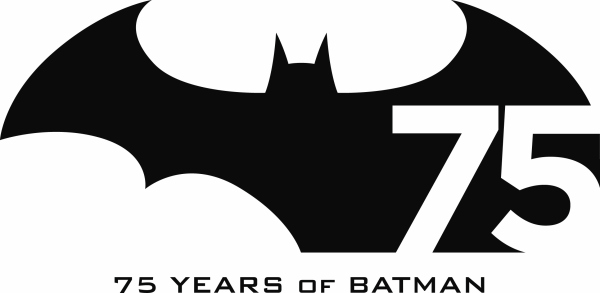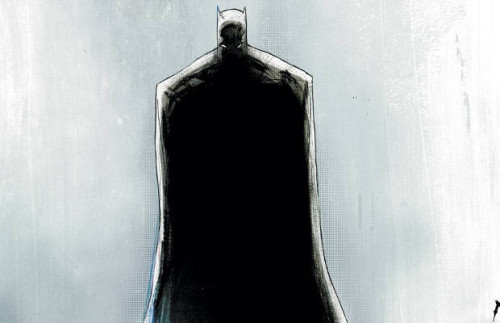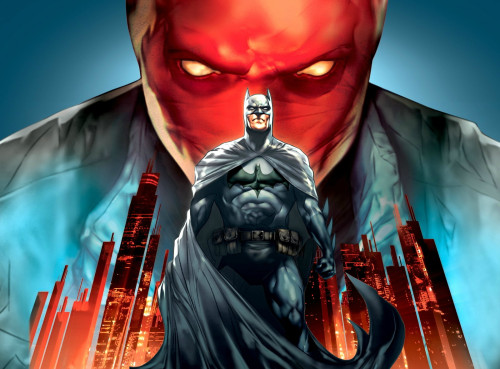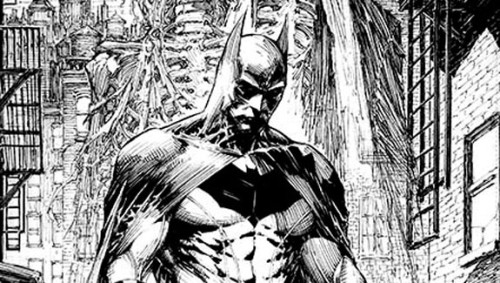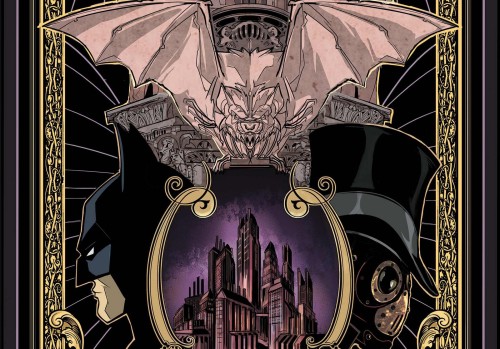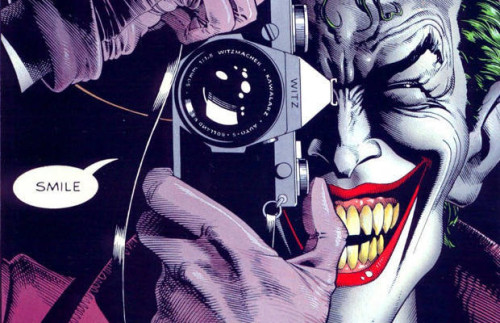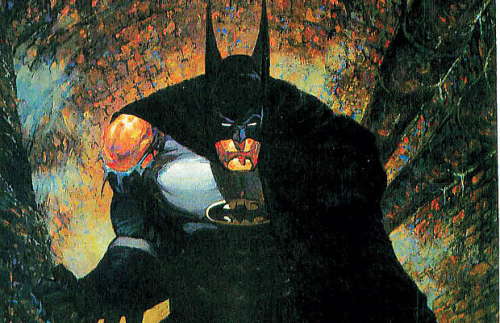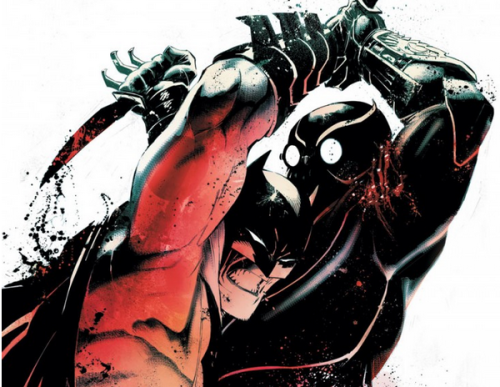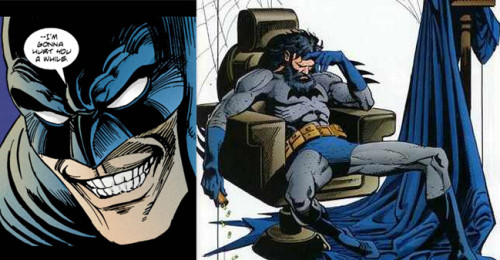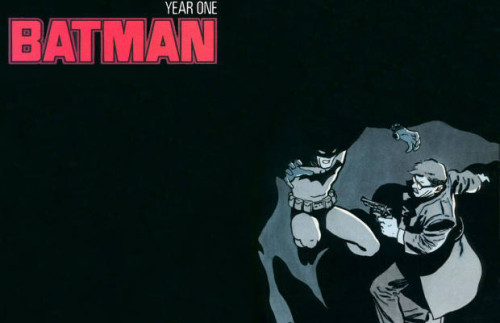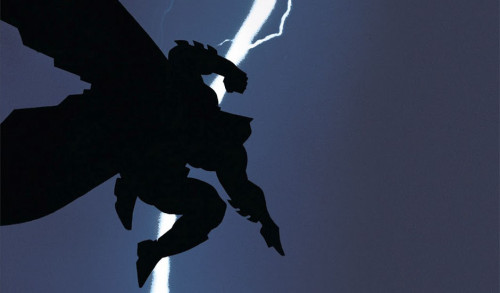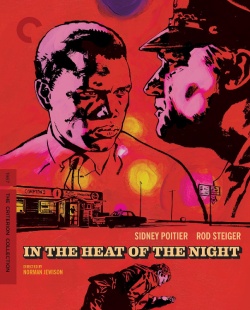With Batman celebrating his 75th Anniversary this week, it felt appropriate to talk about the Caped Crusader’s most beloved storylines. Below you’ll find a list of popular books in no particular order that prove that Batman is DC’s greatest hero. Not that you needed any convincing, of course. Some of these are recent hits, while others are legendary books popular even with comic neophytes. All of them demonstrate why Batman is the paragon of justice we know and love.
Batman: The Black Mirror
“I suppose I’m just not used to seeing you being there when I look up.”
It’s been called the definitive Batman story of the 21st Century. Batman: The Black Mirror kicked off Scott Snyder’s multiple award winning run on the Caped Crusader, and it continues to be held up alongside other legendary Batman stories like The Dark Knight Returns and Batman: Year One. The funny thing about Batman: The Black Mirror is that Bruce Wayne isn’t even under the cowl in this particular adventure. No, it’s his protégé and former partner, Dick Grayson.
Batman: The Black Mirror not only gave readers a look into Grayson’s struggle with assuming the role of Gotham’s protector, but also reveals answers to a mystery that had been on the minds of readers for decades. That mystery: Whatever happened to James Gordon Jr. in Batman: Year One? The answer is provided by The Black Mirror, and it’s anything but pretty. James Jr. is quickly revealed as a recovering psychotic who has returned to Gotham to seek forgiveness from his father, Commissioner Gordon, and sister, Barbra. Their reunion is filled with tension and Grayson watches carefully from afar, trying to learn if the eerily calm James Jr. is really cured of his illness.
I have to admit, I was initially very skeptical that Dick Grayson would be a good fit for Batman. Having read a few issues of Grant Morrison’s incompressible Batman and Robin, I was convinced that Grayson would be the worst Batman since Azrael. I was so wrong. Snyder not only proved that Grayson was more than worthy of taking on the responsibilities of his former teacher in The Black Mirror, but that Gotham could also have a Batman that was kinder and even optimistic about the future.
Batman: Under the Red Hood
“If I allow myself to go down into that place, I’ll never come back.”
Resurrecting a dead character can be tricky and is often criticized for being a cliché in comic books. There are some notable exceptions to that rule however. Judd Winnick’s Batman: Under the Red Hood is one of those few exceptions.
It’s probably not a surprise to most comic readers know that Jason Todd, the second Robin, is alive and well in the DC Universe. Under the Red Hood reveals how that came to be and Todd’s miraculous resurrection resulted in a city-wide gang war involving Gotham crime lord Black Mask, and his former mentor, Batman. Taking over the mantle of the Red Hood, a persona the Joker may have once called his own, Todd goes to war with Gotham’s worst criminals. This inevitably leads to a confrontation with Batman, who has been trying to identify this new murderous vigilante.
At its heart, Under the Red Hood is a father-son story. It takes a look at the complicated relationship that Bruce and Jason had when they were partners, and how Bruce failed to recognize the obvious psychotic tendencies of his former ward. Bruce provided the means for Jason to become what he is in this story: An unrelenting force of nature with a lot of time and initiative. It’s about Batman’s failures and his attempts to help his long-lost son.
While Batman: Under the Red Hood is a damn good book, I can’t help but wince at some of the questionable choices Winnick makes in regards to Todd’s resurrection. They’re small things, but even I have to admit that they’re a little goofy. Thankfully, Under the Red Hood recently received an animated film adaptation that eliminates the more eye-rolling material, and tightens the overall plot. It’s well worth a watch if you don’t have time to read the comic.
Batman: Black and White
“The monsters were all around me.”
Batman: Black and White stands out as one of the best and most daring Batman graphic novels because it allowed writers to get as crazy as they wanted to with The Dark Knight. Comprised of multiple short stories, Batman: Black and White features such talents as Neil Gaiman, Dennis O’Neil, Ted McKeever and Bruce Timm. The collection is free from the continuity of the comics and places Batman in scenarios that are both familiar and unique. Such stories harken back to the 1960s camp of the Adam West television show and even Batman: The Animated Series.
Stand out stories include “Perpetual Mourning,” which has Batman performing an autopsy on a murdered woman with the hope of eventually finding her killer, “Two of Kind,” that follows a seemingly rehabilitated Harvey Dent trying to lead a normal life, and “Heroes,” a WWII-era tale about a boy’s run-in with the Batman. With so many different interpretations of Batman and his cast of supporting characters in Batman: Black and White, you’re sure to find a few stories that catch your interest.
Batman: Gates of Gotham
“The families will fall by the gates of Gotham.”
The second storyline in Scott Snyder’s run on Batman, Gates of Gotham still featured Dick Grayson under the cowl as he tries to solve a series of bombings at notable Gotham landmarks. It was Snyder’s first real exploration of Gotham City’s sordid history. In order to find the answers he needs to solve these seemingly random crimes, Grayson researches the history of Gotham’s wealthiest families, who received the honor of having Gotham’s historic bridges named after them. Grayson, much like the reader, is thrown into a world that he didn’t even know existed. Part mystery and part historical drama, Gates of Gotham is a must-read if you want to know more about the city that Batman calls home.
Batman: The Killing Joke
“Have you ever had a really bad day?”
I realize that The Killing Joke focuses more on The Joker than Batman, but Alan Moore’s single issue story that tells the Clown Prince of Crime’s “origin” also takes an in-depth look at the complicated relationship between the mortal enemies.
The Killing Joke sent a shockwave through Batman comics that can still be felt to this day. It not only presented a possible reason why The Joker does what he does, but it also left an impact on a number of Batman’s supporting characters. Barbara Gordon’s paralysis and possible rape by The Joker is horrific and it made even worse as it is used to psychotically torture her father, James Gordon.
Possibly the most revealing, and disturbing thing about the comic is the final few panels that have Batman and The Joker sharing a laugh. It’s eerie to see the two finally having a moment where they’re not tearing at each other’s throats. At the same time, it shows just how similar the two characters actually are. Crazy seems to attract crazy.
Batman: The Cult
“I always claimed I became Batman to fight crime. That was a lie. I did it to overcome the fear.”
Quite possibly the most underappreciated Batman story ever written, Jim Starlin’s Batman: The Cult has the Caped Crusader pursing a psychotic criminal named Deacon Blackfire, who is quickly forming a dangerous cult comprised of Gotham’s homeless and disenfranchised. Batman is captured by the cult before the events of the story, and is brutally tortured by Blackfire and his devoted followers for weeks.
The story is an analysis of why Bruce Wayne chooses to be Batman. Starlin breaks Batman physically and mentally to show the reader the possible psychotic underpinnings of what drives him to do what he does. Batman is beaten to a point where a complete mental breakdown is the only option for survival. It’s kind of horrifying to learn that Batman is quite possibly one of the few heroes in comics to lean more on his insanity than sanity.
This is not a particularly easy read. It’s probably one of the most graphic and violent Batman stories to be put to paper. Artist Bernie Wrightson has sewers littered with rotting corpses, severed heads and the remnants of ritual-like sacrifices fill in for the normal Gotham skyline one might glimpse in a Batman comic panel. Even will all the twists and turns that Batman: The Cult throws at you, it still manages to be a comprehensible story. It’s the philosophical Batman comic that Arkham Asylum pretends to be. It’s more than worth a single read.
Batman: The Court of Owls
“Bruce Wayne. The Court of Owls has sentenced you to die.”
After Scott Snyder’s previous successes with Dick Grayson under the mask in Black Mirror and Gates of Gotham, Court of Owls saw the triumphant return of Bruce Wayne as Batman. The Court of Owls was a soft relaunch for the comic and had the Dark Knight Detective investigating a cult that has been manipulating events within in Gotham for hundreds of years. As a child, Bruce Wayne spent time studying the legends of the cult, believing that they may have has a hand in the murder of his parents decades ago. Years later as Batman, Bruce discovers that the Court of Owls is active in Gotham and is planning a city wide execution of Gotham’s most prestigious citizens.
Like his previous storylines, Snyder’s Court of Owls succeeds not only by introducing a fascinating new enemy, but by building on what came before. Much like Gates of Gotham, Court of Owls spends its time exploring the history of Gotham and its inhabitants. Snyder demonstrates that even though Batman is a character we’ve known for decades, there’s still plenty more to learn about him.
Batman: Venom
“I’m gonna hurt you a while.”
Many people think that the introduction of Bane was the first appearance of the super drug known only as Venom. Not true. Batman actually used the drug in Dennis O’Neil’s Batman: Venom.
After failing to save the life of a young girl, Batman pursues every means to improve himself physically and mentally. Upon learning of the existence of a drug called Venom, Bruce begins taking the drug in large amounts. While increasing his strength and agility, the Venom increases his aggression and makes his behavior erratic. Realizing that he has become an addict, Batman isolates himself in the Batcave for months with the hope he can end his dependency on Venom.
O’Neal’s story was so good because it showed that even Batman, one of DC’s most intelligent and resilient characters, could fail. Not only could he fail to help an innocent person, but that he could also fail himself. Venom also gives us a glimpse at the struggles Batman faces on account of being human. In a universe full of Green Lanterns, Supermen, Amazons, and other fantastical creatures, Batman still faces a distinct disadvantage because despite his amazing feats, he is just a man. This story is an example of what happens when that fact rears its ugly head.
Batman: Year One
“Ladies, gentlemen, you’ve eaten well. You’ve eaten Gotham’s wealth. Its spirit. But your feast is nearly over. From this moment on, none of you are safe.”
After Frank Miller success with The Dark Knight Returns, the writer was asked to do a retelling of Batman’s origins story for the 1980s. That retelling is now considered to be one of the most untouchable origin stories in all of comics. Not only does it show the a very inexperienced Batman attempting to save his city, but it also present a young Jim Gordon forced to hunt him down for his vigilantism.
Miller’s noire take on Batman had The Dark Knight tackle Gotham’s crooked police force and notable crime families like the Falcones. It was a bold move for Miller to take such a minimalist approach to Batman, and it wasn’t exactly embraced by everyone at that time. When it was first released, the book was viciously criticized by comic readers. With no Robin, classic villains or gadgets, fans scoffed that the comic was one of the worst things to ever happen to The World’s Greatest Detective. Years later, Batman: Year One is considered not only one of the greatest Batman stories of all time, but of the greatest comic books of all time. Sometimes, it just takes a little time to get the accolades your deserve.
The Dark Knight Returns
“This would be a good death…but not good enough.”
Is it even necessary for me to talk about The Dark Knight Returns? It’s quite possibly the most well-known graphic novel outside of Alan Moore’s Watchmen. For those that don’t know (and you should be ashamed of yourselves), The Dark Knight Returns focuses on an elderly Bruce Wayne who put away the cowl and cape ten years ago. Gotham has quickly become an even more violent and dangerous place since his retirement. After witnessing the horrid acts of a vicious street gang on the news, Bruce put on the mask once again to protect the city he abandoned years ago.
The Dark Knight Returns gives readers of today a look into the world America during the Cold War and the Conservative Revolution of the 1980s. The book is extremely critical of American society and uses the DC Universe as a backdrop. It is one of those excellent books that has a message relevant to the real world. It also has the most badass fight between Batman and Superman in the history of comics. You got to give something to the fans, right?
What are some of the Batman stories that you love? How did you celebrate Batman’s 75th anniversary? Let us know in the comments below!

